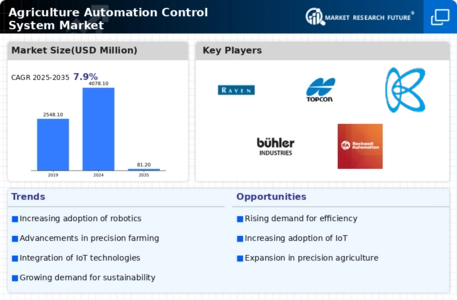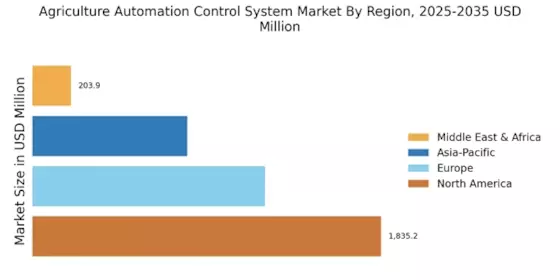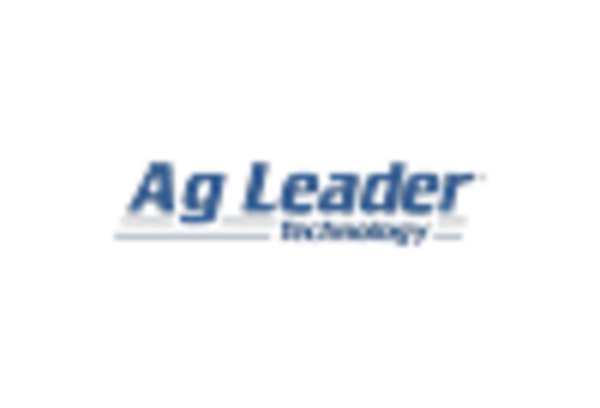Rising Labor Costs
The Agriculture Automation Control System Market is experiencing a notable shift due to the rising labor costs associated with traditional farming practices. As labor expenses continue to escalate, farmers are increasingly seeking automation solutions to enhance productivity and reduce reliance on manual labor. This trend is underscored by data indicating that labor costs in agriculture have risen by approximately 20% over the past five years. Consequently, the demand for automation technologies, such as robotic harvesters and automated irrigation systems, is likely to surge, as these innovations can help mitigate labor shortages and improve operational efficiency.
Government Initiatives and Support
The Agriculture Automation Control System Market is benefiting from various government initiatives aimed at promoting agricultural efficiency and sustainability. Many governments are implementing policies that encourage the adoption of automation technologies through subsidies, grants, and research funding. These initiatives are designed to enhance productivity and reduce environmental impact. For example, certain regions have allocated significant budgets to support the development of smart farming technologies. This governmental backing is likely to accelerate the integration of automation systems in agriculture, fostering innovation and driving market growth.
Increasing Demand for Food Security
The Agriculture Automation Control System Market is significantly influenced by the growing demand for food security. With the global population projected to reach 9.7 billion by 2050, the pressure on agricultural systems to produce sufficient food is intensifying. Automation technologies are seen as a viable solution to enhance crop yields and optimize resource utilization. Reports suggest that the adoption of precision agriculture techniques, which often incorporate automation, can lead to yield increases of up to 30%. This heightened focus on food security is driving investments in automation systems that can ensure sustainable and efficient food production.
Environmental Sustainability Concerns
The Agriculture Automation Control System Market is increasingly shaped by concerns regarding environmental sustainability. As awareness of climate change and resource depletion grows, there is a pressing need for agricultural practices that minimize environmental impact. Automation technologies, such as precision irrigation and automated nutrient management systems, are being adopted to promote sustainable farming practices. Data suggests that implementing these technologies can reduce water usage by up to 50% while maintaining crop yields. This alignment with sustainability goals is likely to drive the demand for automation solutions, as farmers seek to balance productivity with environmental stewardship.
Technological Advancements in Agriculture
The Agriculture Automation Control System Market is propelled by rapid technological advancements that are transforming agricultural practices. Innovations in sensor technologies, data analytics, and machine learning are enabling farmers to make informed decisions and optimize their operations. For instance, the integration of drones for crop monitoring and automated machinery for planting and harvesting is becoming increasingly prevalent. Market data indicates that the precision agriculture segment, which heavily relies on automation, is expected to grow at a compound annual growth rate of 12% over the next five years. This trend highlights the critical role of technology in shaping the future of agriculture.

















Leave a Comment